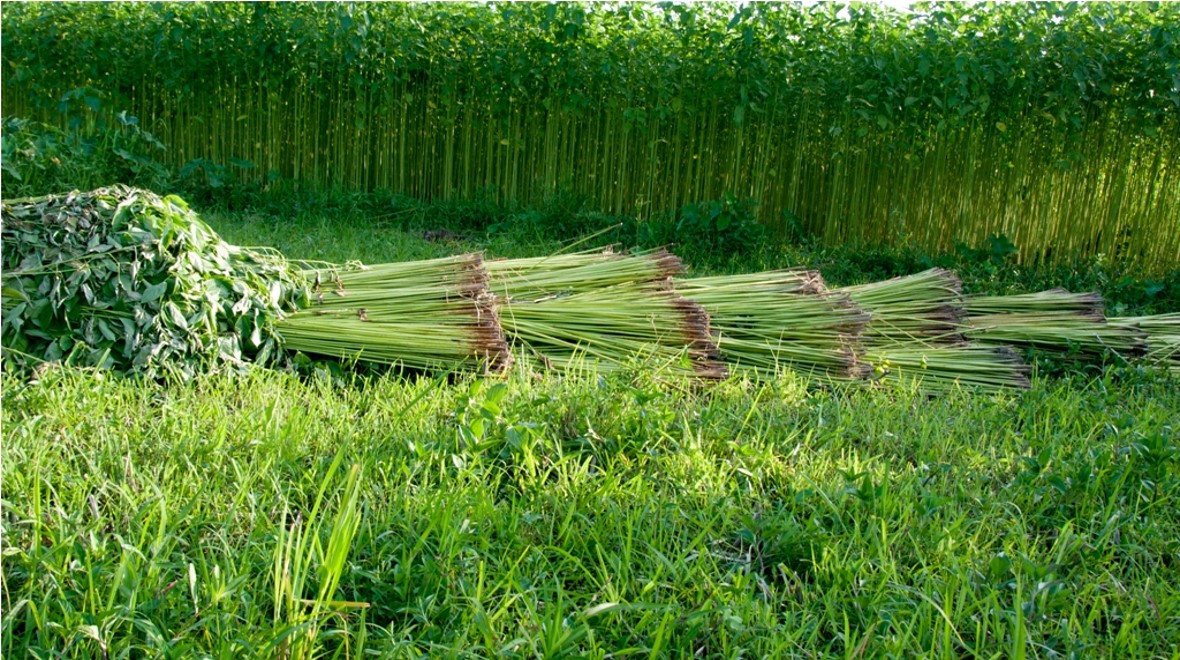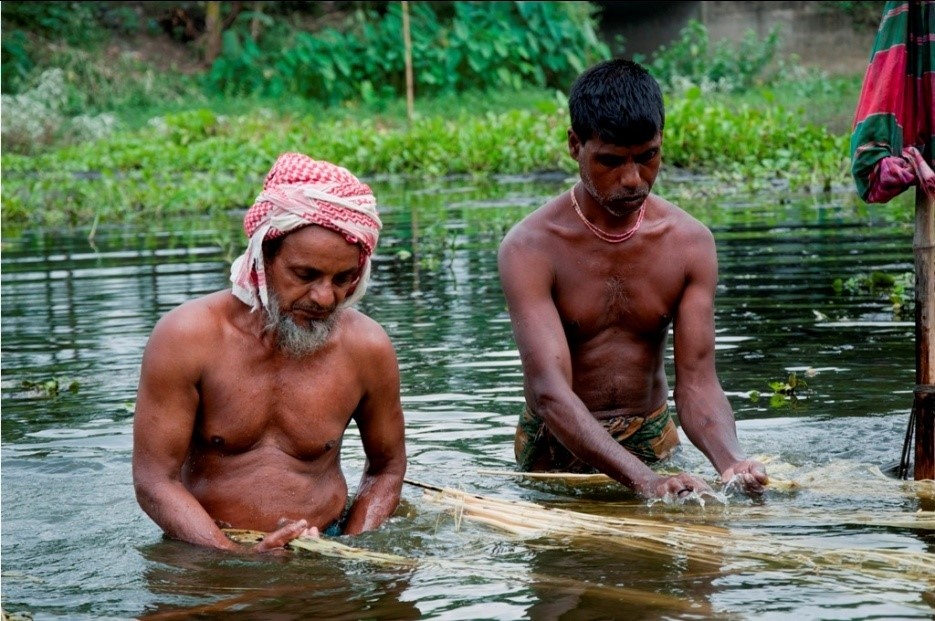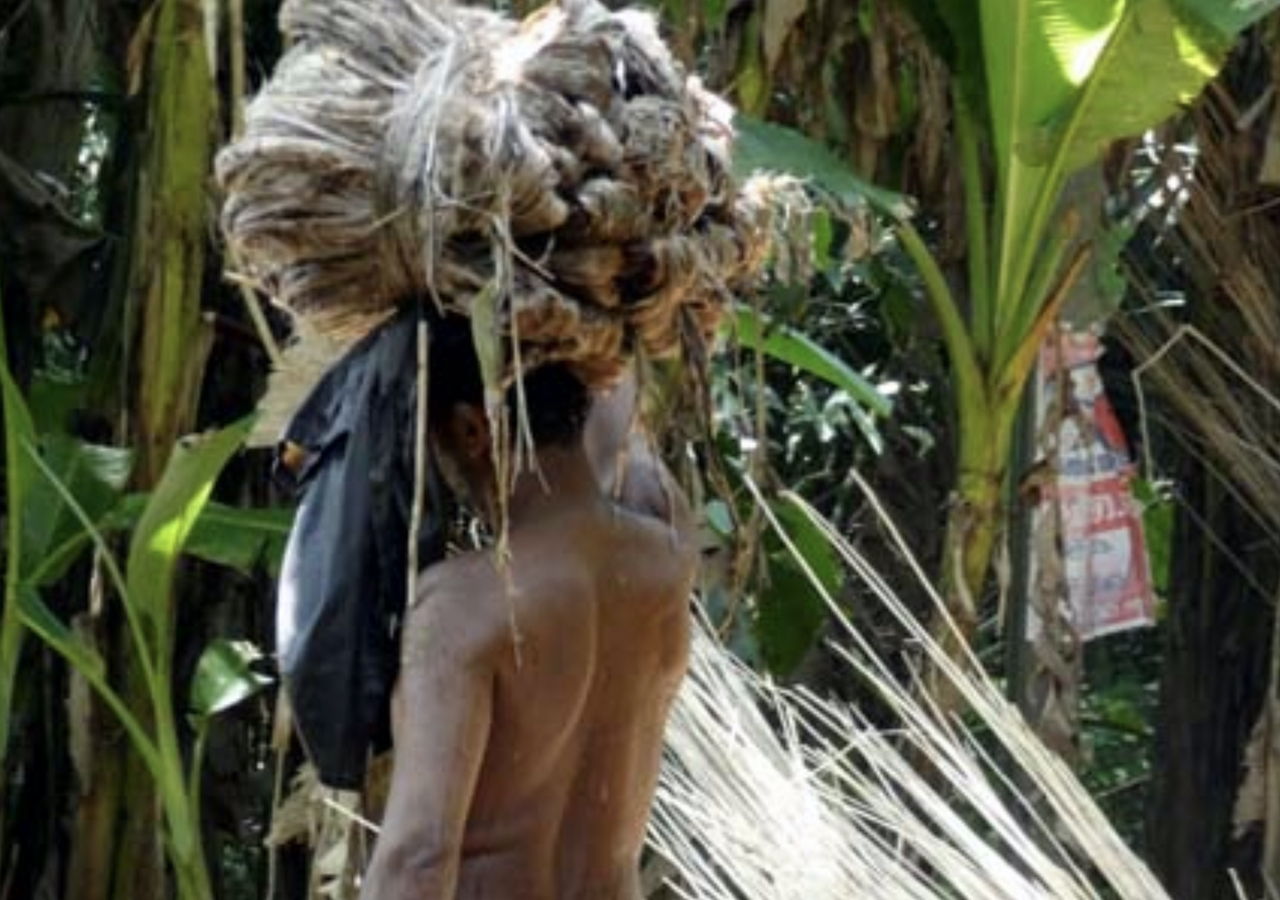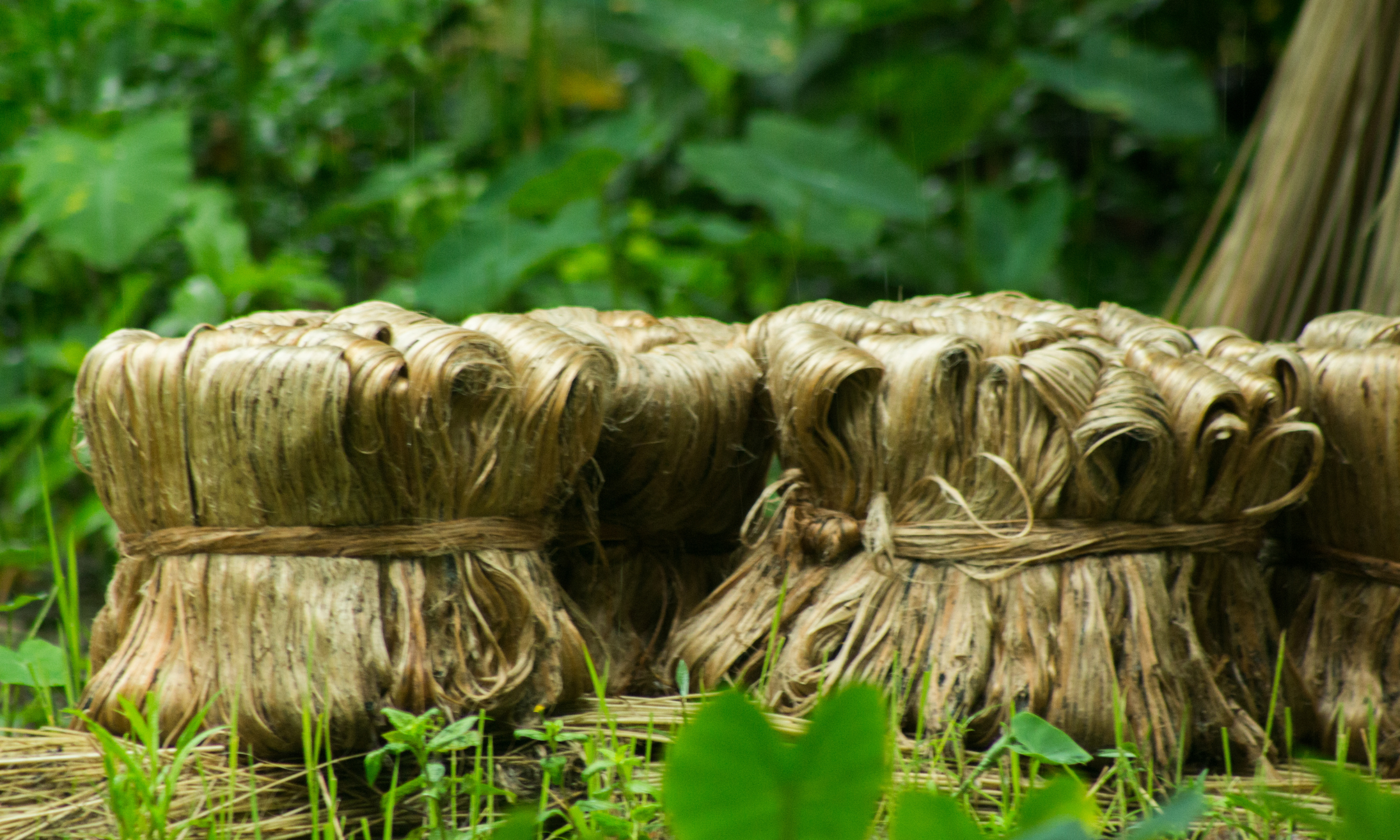Jute Cultivation
Where does it grow? What does it need?
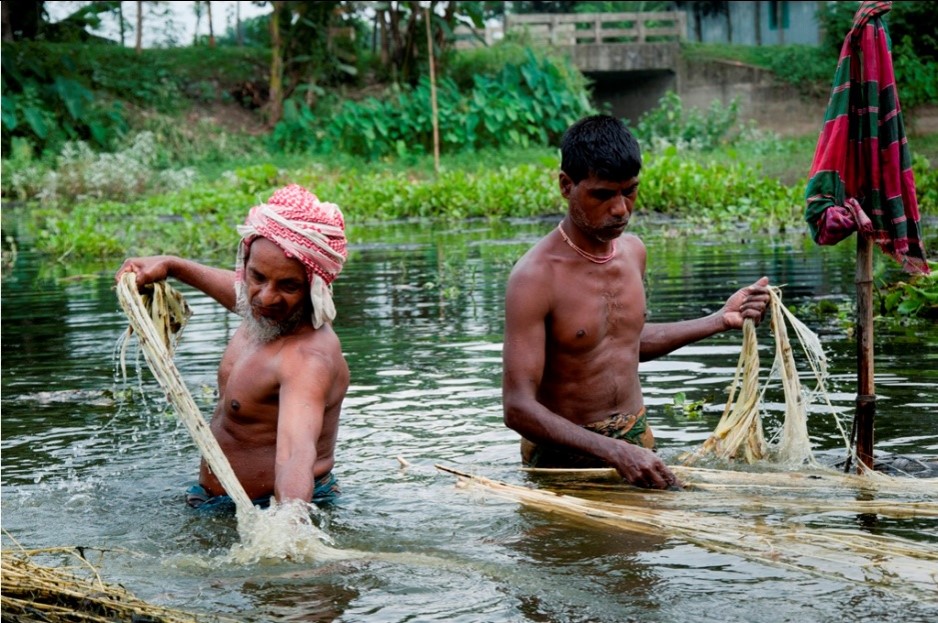
Information on cultivating jute
For non–edible applications, jute is almost exclusively grown in Bengal due to the unique conditions of fresh, oxygenated water from the Ganges and Brahmaputra rivers, and temperature stability during the growing season.
Farms in low–lying areas may be susceptible to flooding, and high–ground, a lack of irrigation. Both can compromise fibre quality. Inferior clay and sandy soils respectively produce sticky and coarse fibres, and require fertilizers that remain in the final product/s.
Jute is highly dependent on seasonal weather conditions in areas susceptible to global warming. Low pre–monsoon rainfall will affect planting and fibre quality. The best is grown within 24-37˚C with long periods at 34˚C between March and September.
Root and leaf waste is ideal natural fertilizer for intermediate vegetable crops on the same land, and the outer cortex and inner xylem used for local building materials, eg. thatching.
After cropping, stems are softened by retting in slow moving, clear water at 34˚C within 8 days, before bacteria or acidity compromise the filaments. If temperature varies >2˚C, this can double, and bacteria may be present. Fibre picks up contaminants from low water quality.
After hand-stripping and natural drying, filaments are graded for quality and folded into Morah bales for shipping.
